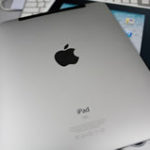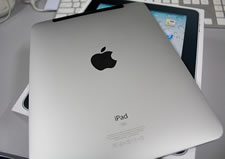
Putting Apple iPads in the hands of every student and professor on a PC-based campus required some convincing, but a year later, Seton Hill University officials said the tablet program has changed the way classes are taught.
Seton Hill in Greensburg, Pa., a small campus of about 2,400 students, drew international attention in 2009 when officials there said every student and educator would receive an iPad just after the tablet was announced.
Read more about the iPad in higher education…
Other schools, from research campuses like Oklahoma State University to small institutions like Washington College in Chestertown, Md., followed Seton Hill’s lead and experimented with a limited number of iPads.
During a session at EduComm 2011, an annual educational technology conference in Orlando, three Seton Hill decision makers who oversaw the iPad rollout said the device has remained popular among students and staff, even though most educators weren’t among the Apple faithful.
“It was controversial because many of our faculty were actually diehard Windows, PC-based computer users,” said Mary Spataro, an instructional designer at Seton Hill. “We [had] the iPad jitters. We wondered, ‘Can we do this?’”
Spataro said faculty members underwent extensive professional development before iPads were released campus wide. The training process, she said, gave professors a chance to help each other which functions and applications would work best for various courses.
“That helped us sort of sure up those nerves a little bit so that we weren’t quite as out there and adrift,” Spataro said. “It built a sense of community. … We really wanted to bond together on this adventure, and we really have done that.”
Professors now include necessary iPad apps on their syllabi along with other resources needed for their course. Only five out of 100 Seton Hill faculty members required iPad apps that cost students more than $30 per semester, officials said.
Seton Hill had to bolster its IT infrastructure before the web-accessible iPads were doled out to every student and teacher on campus.
The university’s wireless internet network expanded from 25 access points in 2009 to more than 330 today, which, along with a load balancing system, ensures no one mobile device will bog down the entire network.
Seton Hill students had 25 megabytes per second of web access available to them two years ago, said Phil Komarny, the university’s executive director of computer information and technology. That number has jumped to 500 megabytes per second this year as the school adjusts to more mobile technology demand.
“That’s really unheard of” for a university the size of Seton Hill, Komarny said, adding that the average number of web-accessible mobile devices per Seton Hill student stands at 2.7. “It’s really the goldfish in the fish bowl idea: You give them a bigger fish bowl they will grow into it.”
Komarny said the university’s iPad announcement brought unprecedented attention to the small Pennsylvania campus. Seton Hill, on March 30, 2009, was mentioned in more than 1,000 tweets per minute on Twitter, and the school’s web traffic spiked by more than 1,000 percent.
The iPad announcement, Komarny said, was not a public relations stunt.
“It was completely organic,” he said. “It’s not something we tried to do.”
Mary Ann Gawelek, vice president for academic affairs and dean of the Seton Hill faculty, said the campus-wide distribution of iPads was not without criticism.
“Many people said, ‘How could you do that without testing it?’” she said, adding that campus officials first discussed giving iPads only to incoming students before announcing a school-wide program. “We actually trusted that it was going to work.”
Gawelek said a recent Seton Hill survey validated the university’s decision to move ahead with the iPad rollout when many colleges were hesitant to embrace the market’s newest computer tablet.
Forty-four percent of students said using the iPad “significantly improved” their educational experience, while 52 percent said the tablet “increased their ability to communicate with peers and faculty.” Six in 10 students said the iPad helped “achieve learning objectives.”
Two-thirds of faculty respondents said they used the device for instruction at least weekly, “if not every class,” according to the Seton Hill survey.
- Research: Social media has negative impact on academic performance - April 2, 2020
- Number 1: Social media has negative impact on academic performance - December 31, 2014
- 6 reasons campus networks must change - September 30, 2014


Comments are closed.